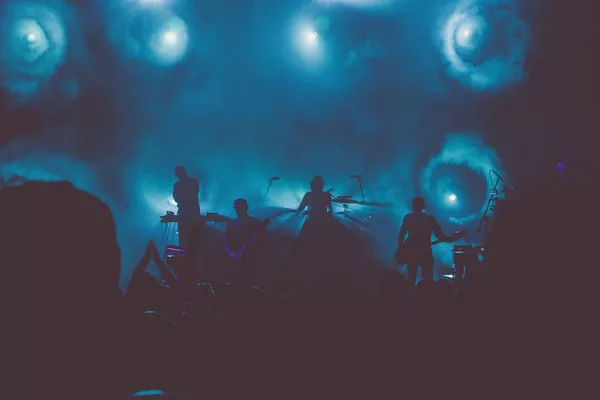In the vast realm of the music industry, one question echoes through the ages: “Which singer has the most fans?” This query transcends borders, genres, and generations, captivating the imagination of music enthusiasts worldwide. In this article, we embark on a journey to unravel the mysteries behind the fanbases of various iconic singers, delving into the metrics, social media dynamics, and cultural influences that contribute to their immense popularity.
Understanding Fan Base Metrics
To ascertain which singer has the most fans, it’s crucial to delve into the metrics that quantify their reach and influence. Album sales, concert attendance, and digital streaming numbers stand as key indicators of an artist’s popularity. The behemoth task of comparing these metrics across diverse genres and eras necessitates a nuanced approach.
Historically, the Beatles have been hailed as one of the most successful bands, commanding unparalleled album sales and amassing a colossal fan following during the 1960s. Their enduring appeal serves as a testament to the timeless nature of musical greatness.
However, contemporary artists like Taylor Swift have disrupted traditional metrics, leveraging the digital age to amass millions of followers on streaming platforms. Swift’s ability to adapt to evolving industry landscapes underscores the importance of considering not only historical benchmarks but also contemporary digital platforms.
The Social Media Paradox: Measuring Fame in the Digital Age
In the 21st century, the advent of social media has transformed the landscape of celebrity culture. Platforms like Instagram, Twitter, and TikTok have become battlegrounds for artists vying for the title of the most followed. In the quest to answer, “Which singer has the most fans?” one must navigate the complex realm of social media metrics.
As of our exploration, pop sensation Ariana Grande boasts a staggering number of followers on platforms like Instagram, Twitter, and YouTube. Her social media dominance showcases a paradigm shift, highlighting the influence of digital platforms in shaping an artist’s popularity. The ability to connect directly with fans in real-time has become a game-changer, blurring the lines between celebrity and audience.
Nevertheless, it’s imperative to note that sheer follower count may not necessarily equate to a genuine and engaged fanbase. Metrics such as likes, comments, and shares provide a more nuanced understanding of an artist’s impact on their audience. The emergence of viral trends and challenges on platforms like TikTok has added a dynamic element to the equation, allowing artists to organically grow their fanbase through user-generated content.
See Also: Why are Music and Dance Important in Culture?
Cultural Influences and Global Appeal
While metrics offer quantitative insights, understanding the cultural influences that contribute to an artist’s popularity is equally vital. The global appeal of a singer often hinges on their ability to resonate with diverse audiences, transcending linguistic and cultural barriers.
K-pop sensation BTS has emerged as a global phenomenon, captivating audiences across continents with their dynamic performances and relatable lyrics. Their fanbase, known as the “ARMY,” extends far beyond South Korea, showcasing the power of cultural fusion in the digital age. BTS’s success prompts us to rethink the conventional metrics of fame, emphasizing the importance of cultural relatability in building a massive and dedicated fan following.
In contrast, artists like Beyoncé have become cultural icons, influencing not only the music industry but also making significant strides in advocacy and entrepreneurship. The breadth and depth of her influence underscore the interplay between artistry, activism, and personal branding in cultivating a lasting and impactful fanbase.
The Longevity Factor: Icons Across Generations
As we seek to answer the perennial question of which singer has the most fans, it becomes evident that longevity plays a pivotal role. Artists who withstand the test of time, appealing to successive generations, attain a level of iconic status that transcends mere popularity.
Elvis Presley, often hailed as the “King of Rock and Roll,” continues to command reverence and admiration decades after his passing. The sustained interest in Presley’s music and persona underscores the enduring nature of fan devotion. His influence laid the groundwork for future generations of musicians, solidifying his place in the pantheon of musical legends.
Similarly, the enigmatic Michael Jackson left an indelible mark on the music industry, earning the title of the “King of Pop.” Jackson’s ability to reinvent himself with each era, coupled with groundbreaking music videos, contributed to a fanbase that spans generations. The posthumous release of new material and continued celebrations of his legacy underscore the timeless appeal that defines a true music icon.
Fan Clubs and Community Building
Beyond the digital realm, fan clubs have played a pivotal role in fostering a sense of community among devoted followers. These organized groups, fueled by passion and admiration, contribute significantly to an artist’s lasting impact.
The Beatles’ fan club, established during the height of Beatlemania, exemplifies the historical significance of organized fan communities. In the contemporary landscape, artists like Justin Bieber have capitalized on fan club platforms to create exclusive content and experiences, forging a deeper connection with their most dedicated followers.
However, the evolution of fan communities goes beyond official fan clubs. Online forums, social media groups, and fan-driven initiatives have become integral components of the modern fan experience. The sense of belonging and shared enthusiasm within these communities amplifies an artist’s reach, transforming fandom into a cultural phenomenon.
The Global Phenomenon of Fan Voting and Awards
In the digital age, fan voting and awards have become significant barometers of an artist’s popularity. Events like the MTV Europe Music Awards and the American Music Awards incorporate fan votes, allowing the audience to actively participate in shaping the narrative of musical success.
Korean music awards, such as the Mnet Asian Music Awards (MAMA), take fan voting to another level, with dedicated categories recognizing international fans’ contributions. The intense competition among fanbases to secure awards for their favorite artists adds a competitive and participatory element to the overarching question of which singer has the most fans.
Conclusion: Defining the Indefinable
In our quest to determine which singer has the most fans, we encounter a multifaceted landscape where metrics, digital dynamics, cultural influences, and community building converge. The answer, it seems, is as elusive as the ever-evolving nature of the music industry itself.
From the Beatles’ historic conquests to Taylor Swift’s digital dominance, from the global phenomenon of BTS to the enduring legacies of Elvis Presley and Michael Jackson, each artist brings a unique set of factors that contribute to their fanbase’s magnitude. In the end, the question of which singer has the most fans transcends mere numbers; it encapsulates the essence of musical impact, cultural resonance, and the enduring connection between artists and their devotees. As the musical landscape continues to evolve, so too will the criteria by which we measure the breadth and depth of fan devotion, ensuring that this question remains a captivating enigma for generations to come.

























